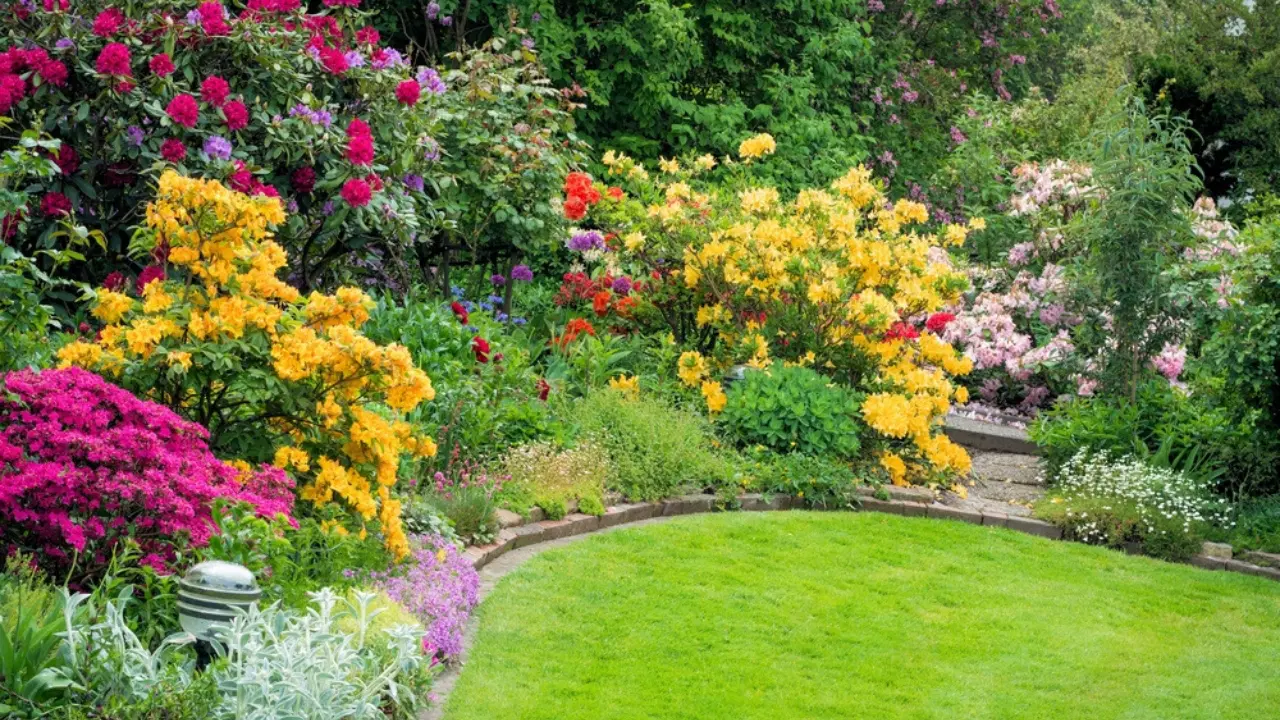Gardening enthusiasts often seek ways to enhance the aesthetic appeal and functionality of their gardens. One of the most effective ways to achieve this is by incorporating a variety of shrubs. Shrubs not only provide structure and beauty but also offer privacy, attract wildlife, and can even improve the soil. In this article, we will explore the top 10 shrubs that can transform your garden, offering tips on how to plant and care for them to ensure they thrive.
1. Hydrangea (Hydrangea macrophylla)
Hydrangeas are renowned for their large, colorful flower heads, which can be blue, pink, white, or purple, depending on the soil pH. These versatile shrubs can be grown in both sun and shade, making them a favorite among gardeners. To care for hydrangeas, ensure they are planted in well-drained soil and receive regular watering, especially during dry periods. Prune them in late winter or early spring to encourage new growth and abundant blooms.
2. Boxwood (Buxus sempervirens)
Boxwood shrubs are popular for their dense, evergreen foliage and their ability to be shaped into hedges and topiaries. They are ideal for creating formal garden structures or borders. Boxwoods prefer partial to full sun and well-drained soil. Regular pruning is essential to maintain their shape and prevent disease. Be mindful of boxwood blight, a fungal disease that can affect these shrubs.
3. Butterfly Bush (Buddleia davidii)
As the name suggests, butterfly bushes are magnets for butterflies and other pollinators. These fast-growing shrubs produce long, cone-shaped clusters of flowers in shades of purple, pink, white, and yellow. Butterfly bushes thrive in full sun and well-drained soil. They are drought-tolerant once established and should be pruned back hard in early spring to promote vigorous growth and flowering.
4. Azalea (Rhododendron spp.)
Azaleas are belove for their vibrant spring blooms that can cover the entire shrub in shades of red, pink, white, and purple. These shrubs prefer partial shade and acidic, well-drained soil. Mulching around the base can help retain moisture and regulate soil temperature. Prune azaleas after flowering to maintain their shape and remove spent blooms.
5. Lilac (Syringa vulgaris)
Lilacs are cherishe for their fragrant, tubular flowers that bloom in spring. They come in various shades of purple, pink, white, and blue. Lilacs prefer full sun and well-drained soil. They benefit from annual pruning after blooming to remove old wood and encourage new growth. Lilacs can also be prone to powdery mildew, so ensure good air circulation around the plants.
6. Forsythia (Forsythia x intermedia)
Forsythia is one of the earliest shrubs to bloom in spring, with bright yellow flowers that appear before the leaves. These hardy shrubs thrive in full sun to partial shade and well-drained soil. Forsythias grow rapidly and can become unruly, so regular pruning after flowering is necessary to maintain their shape. They are also relatively low-maintenance and drought-tolerant once established.
7. Rose (Rosa spp.)
Roses are timeless garden classics known for their stunning blooms and sweet fragrance. With numerous varieties available, ranging from climbing roses to shrub roses, there is a rose for every garden style. Roses prefer full sun and rich, well-drained soil. Regular feeding with a balanced fertilizer and pruning to remove dead or diseased wood will keep your roses healthy and blooming.
8. Spirea (Spiraea spp.)
Spirea shrubs are prize for their delicate clusters of white or pink flowers that bloom in late spring to summer. They are easy to grow and care for, making them a great choice for beginners. Spireas thrive in full sun to partial shade and well-drained soil. Prune them in early spring to remove old wood and encourage new growth. Spireas are also relatively drought-tolerant once established.
9. Camellia (Camellia japonica)
Camellias are known for their glossy, evergreen leaves and large, showy flowers that bloom in late winter to spring. These shrubs prefer partial shade and acidic, well-drained soil. Mulching around the base can help retain moisture and protect the roots. Prune camellias after flowering to shape the plant and remove any dead or damaged wood.
10. Weigela (Weigela florida)
Weigela shrubs are value for their tubular flowers that attract hummingbirds and their attractive foliage. They bloom in late spring to early summer with flowers in shades of pink, red, and white. Weigelas prefer full sun to partial shade and well-drained soil. Prune them after flowering to maintain their shape and encourage new growth.
Conclusion
Incorporating a variety of shrubs into your garden can greatly enhance its beauty and functionality. From the vibrant blooms of hydrangeas and azaleas to the evergreen structure of boxwoods and camellias, there is a shrub to suit every garden style and preference. By selecting the right shrubs for your climate and soil conditions, and providing proper care, you can enjoy a stunning and thriving garden year-round. Whether you’re looking to attract pollinators, create privacy, or simply add a splash of color, these top 10 shrubs are sure to transform your garden into a delightful outdoor haven.
Q&A
1. How can incorporating shrubs enhance my garden?
Incorporating shrubs into your garden can enhance its beauty and functionality by adding structure, color, and texture. Different shrubs, like hydrangeas and azaleas, can provide vibrant blooms, while others, like boxwoods and camellias, offer evergreen structure.
2. What types of shrubs are best for attracting pollinators?
Shrubs with vibrant blooms, such as hydrangeas and azaleas, are excellent for attracting pollinators like bees and butterflies. These flowering shrubs can bring life and movement to your garden, while also supporting local ecosystems.
3. How do I choose the right shrubs for my garden?
To choose the right shrubs, consider your garden’s climate, soil conditions, and the aesthetic you’re aiming for. Select shrubs that will thrive in your specific environment and suit your garden’s design, whether you’re looking for color, privacy, or evergreen structure.
4. Can shrubs help create privacy in my garden?
Yes, certain shrubs, particularly evergreen varieties like boxwoods, can create natural privacy barriers. These shrubs provide year-round coverage, helping to define spaces and shield your garden from view.
5. What are the benefits of having a variety of shrubs in my garden?
Having a variety of shrubs in your garden allows for year-round interest, offering seasonal blooms, evergreen structure, and diverse textures. This variety enhances both the visual appeal and functionality of your garden, making it a more dynamic and welcoming space.

